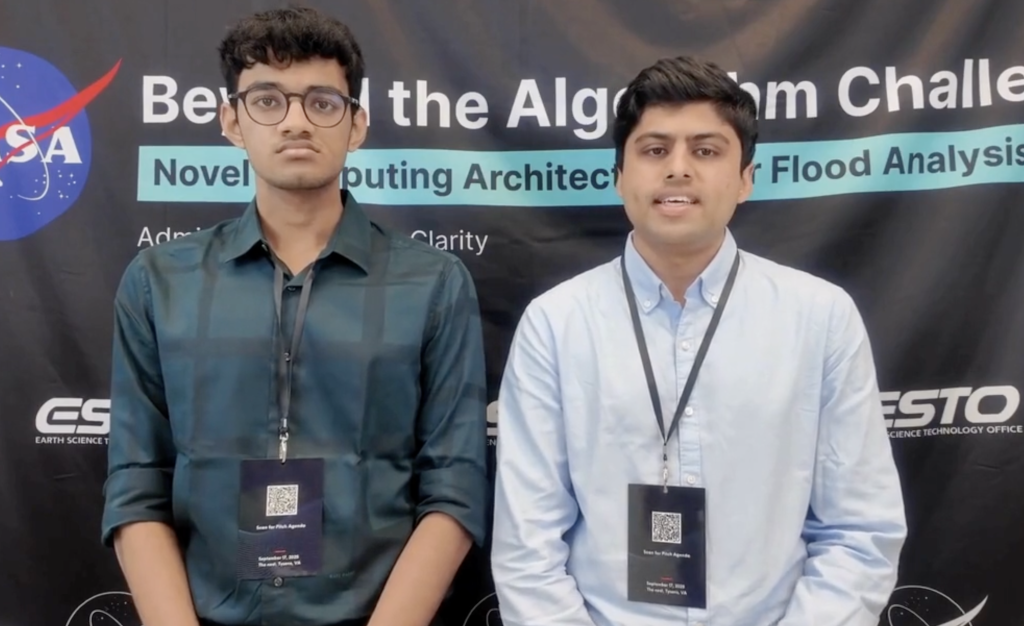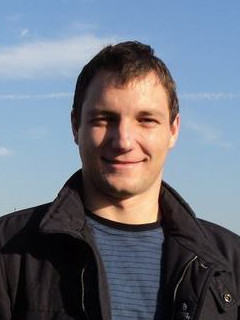Congratulations to Rohan Timmaraju & the NEO-FLOOD Team
Congratulations to Rohan Timmaraju & the NEO-FLOOD Team
We’re thrilled to congratulate Rohan Timmaraju and his collaborators on their outstanding achievement in the Beyond the Algorithm Challenge with the NEO‑FLOOD project. This win highlights the strength of cross‑disciplinary thinking, where foundational research technologies enable solutions to high‑stakes problems.
The NASA Earth Science Technology Office seeks solutions to complex Earth Science problems using transformative or unconventional computing technologies such as quantum computing, quantum machine learning, neuromorphic computing, or in-memory computing. The NEO-FLOOD team developed a novel, brain-inspired algorithm to detect floods in real-time on power-constrained neuromorphic hardware suitable for deployment in space.
Problem Space
Floods cause $100B+ in annual damages globally, yet critical response decisions are often delayed by 6–72 hours due to ground-based satellite processing bottlenecks. This “intelligence gap” makes high-quality Earth observation data operationally useless during the crucial “Golden Hour” — when rapid intervention can save lives. The NEO-FLOOD (Neuromorphic Earth Observation for Flood-mapping) approach directly addresses this challenge:
- The problem: Traditional satellites act as passive data collectors, sending raw data to Earth for processing, creating dangerous delays.
- The innovation: A spiking neural network, Spike2Former-Flood, optimized for real-time optical and SAR data directly on-satellite.
- The hardware: Space-validated neuromorphic processors (BrainChip Akida, Intel Loihi 2) running at only 2–5W.
- The impact: Closes the intelligence gap from hours to minutes, transforming satellites into autonomous decision-support systems. This order-of-magnitude latency improvement could enable immediate flood response coordination for emergency agencies, insurers, and humanitarian organizations.
A Compiler Researcher’s Role
Rohan’s expertise in compilers and systems research provided key foundations for NEO-FLOOD’s success. Reconciling a novel AI paradigm and real-time systems required compiler-level thinking to:
- Optimize for the edge: optimize the model for performance and energy efficiency on heavily constrained space hardware.
- Ensure Robustness: enable streamlined, reliable pipelines for sensor fusion and onboard processing.
- Map to Novel Hardware: develop strategies for mapping a complex neural network onto heterogeneous neuromorphic hardware.
This achievement demonstrates that advances in compilers and systems research
can directly influence solutions to pressing global problems, and bridge the gap
between research infrastructure and mission-critical practice.
 Rohan’s achievement with NEO-FLOOD is a testament to how foundational compiler
and systems research can directly impact global resilience challenges.
We couldn’t be prouder to see him bridging disciplines — from compiler
technologies to neuromorphic AI in orbit. “Early on, we spent a lot of time
trying to fit our flood analysis models onto the neuromorphic hardware. But the
real breakthrough came when we stepped back and re-examined the core problem,”
shares Rohan. “We realized the critical bottleneck wasn’t computational power,
it was latency. The goal isn’t just to process data faster; it’s to eliminate
the round-trip to Earth entirely. That insight shifted our focus from simply
optimizing an algorithm to redesigning the entire decision-making workflow
around the hardware’s native strengths: low power and real-time processing
directly in orbit.”
Rohan’s achievement with NEO-FLOOD is a testament to how foundational compiler
and systems research can directly impact global resilience challenges.
We couldn’t be prouder to see him bridging disciplines — from compiler
technologies to neuromorphic AI in orbit. “Early on, we spent a lot of time
trying to fit our flood analysis models onto the neuromorphic hardware. But the
real breakthrough came when we stepped back and re-examined the core problem,”
shares Rohan. “We realized the critical bottleneck wasn’t computational power,
it was latency. The goal isn’t just to process data faster; it’s to eliminate
the round-trip to Earth entirely. That insight shifted our focus from simply
optimizing an algorithm to redesigning the entire decision-making workflow
around the hardware’s native strengths: low power and real-time processing
directly in orbit.”




